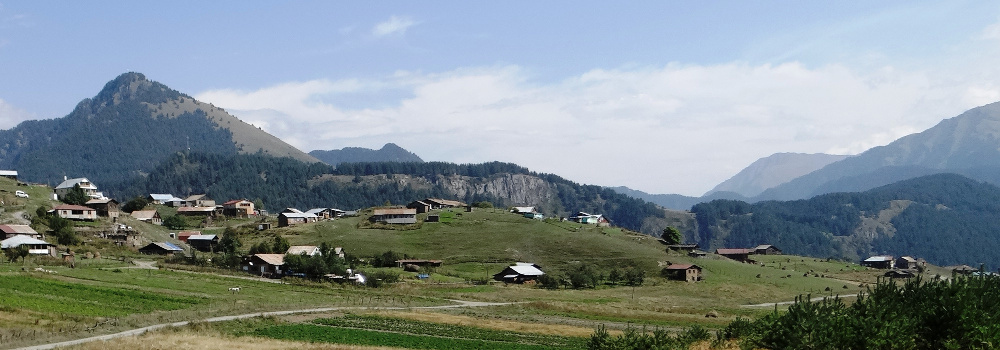There are several protected areas in the region of Tusheti, Georgia (national park, strict nature reserve and protected landscape area). Their management has considerable gaps (inventory and forest management principles are missing). The condition of protected areas is not satisfactory and dynamic changes occur recently (vegetation dieback, occurrence of insects under bark). These are reasons for which the monitoring of forest ecosystems has to take place and forest management measures have to be adjusted in order to allow careful exploitation of forest ecosystems in line with the management targets.
The project aims at setting up a basic model of sustainable forestry built on actual data obtained about the condition of forest ecosystems reflected into the forest management plan. Within the project solution, a simple forest management plan should be set up that would provide a general view about possibilities of using wood for the local population with respect to the current condition of forest stands within the framework of forest classes (qualitative and quantitative evaluation, characterization of forest types). Emphasis will be put on the underpinning of negative factors, namely the occurrence of forest insect pests.
Expected project outputs will be maps and methodological procedures for the forest inventory (forest status determination) and forest management planning, evaluation of the condition of forest ecosystems from the perspective of their endangerment by biotic factors (namely by under-bark insects), proposed methodology for basic forest management planning with emphasis on forest protection and assurance of the fulfilment of other forest functions – management of forest stands in the sense of near-natural forest management.
An inseparable part of the outputs will be a series of training courses for stakeholders, in which these will be informed in detail about individual methodological procedures, map outputs, their use, and will be trained for the collection of basic field data and their processing. The aim is also to enhance the qualification of staff working at Administrations of Protected Landscape Areas (PLA).
The submitted project follows up the declared needs of the partner country (after discussion with stakeholders). Main reasons proposed to be resolved are as follows:
- Non-existence of the forest inventory;
- Occurrence of forests, grasslands, pasturelands and their acreage has not been determined precisely;
- Forest areas have not been precisely defined and forest types have not been determined (defined) – the characterization of natural conditions does not exist;
- Definitions of quantitative and qualitative characteristics of wood-producing resources (forest functions) do not exist;
- The health condition of forest ecosystems is not assessed;
- The condition of forest ecosystems infested by insects or fungi is not evaluated;
- A monitoring programme is missing to evaluate damage to forest ecosystems by biotic pests including the proposal of management, methodological procedures and necessary care for the damaged forest ecosystems;
- Management in forest ecosystems is not based on sustainable exploitation and requirements of local communities for using the forest ecosystems are not respected;
- Indicators of timber volume in the given area are not defined (annual increment, timber supply, timber use possibilities, logging limits, regeneration possibilities etc.);
- Species composition and representation of individual species in the given area are not defined or determined etc.
- In most cases, methodological recommendations applicable in forest planning, forest inventory and forest protection are insufficiently sophisticated.

